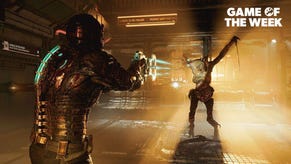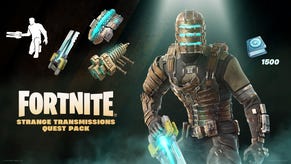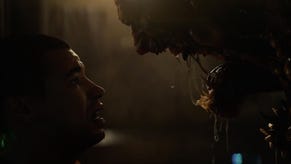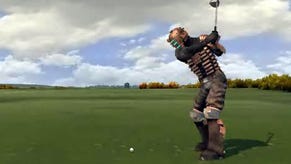Dead Space
Back to mine?
Unless it's Madden under that welding mask, EA must be serious about adding variety to its portfolio of familiar licences. Dead Space isn't based on a sport, a children's novel, or a sport in a children's novel. It's not family friendly - it's not particularly friendly at all - and it's certainly not casual. In fact, it's a chance to remember how broad EA's output can be: this isn't from the company that made endless Sims 2 expansions, it's from the company that sits back patiently waiting for Spore to come to the boil, and recently allowed Criterion to drive Burnout so far out of its comfort zone.
But it's not all good news. Dead Space's plot, detailing engineer Isaac Clarke's fight against the mutating alien Necromorphs aboard the Ishimura, a vast mining spaceship, seems to have been constructed in the dark from a limited selection of flashcards, and many of the game's elements - from the over-the-shoulder camera to the derelict spacehulk setting - are not hard to trace back to their original lineages within other companies' IP. A certain degree of educated theft seems to be the norm for survival-horror, but Dead Space goes further than you might expect, taking clichés from both science-fiction and monster movies and creating a perfect storm of the abstractly familiar.
That doesn't mean it isn't effective, however, and perhaps that's because, deep down, Dead Space doesn't have the loftiest of goals. "Today's demo is all about scaring the pants off you," says Derek Chan, the game's global product manager, before adding, possibly under threat of immediate termination, "It's also about polish and innovation."
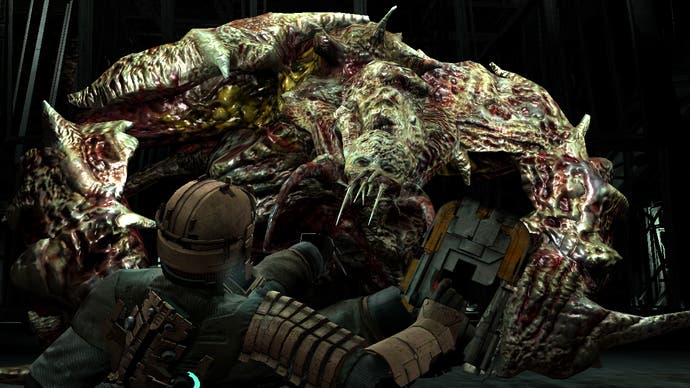
It's soon clear that what it's really all about is atmosphere. The first sign is the dimming of the demo room lights - a masterstroke from the developers that ensures that half my notes end up written on my leg. What follows is a walkthrough, and subsequent hands-on, with the second chapter of the game - a chillsome plod around the Ishimura's medical wing.
Dead Space is certainly effective. While the design may be pedestrian - a sparking mess of heating ducts and smashed containment chambers, so generic as to be perversely comforting - the pacing and staging is often brilliant. Playing out in what are essentially a series of closed-off arenas, the game has a natural understanding of the correct balance of action and anticipation, and is constantly messing with its audiences' expectations. No monsters burst from these closets: most rooms, when first glimpsed through blinking overheads and flickering computer screens, initially appear empty, threats only sneaking into your peripheral vision after you've started to let yourself feel comfortable.
Making the most of a genuinely creepy soundtrack of clicks and gasps and full-bodied roars, the Necromorphs lurk and circle and wait, only rushing out - always nearer than anticipated - at the last minute. The stop-start blasts of intense, close-up violence that follow - tentacles lash around and talons plunge through skin - are then followed by further uneasy pauses before the second-wave attacks.


